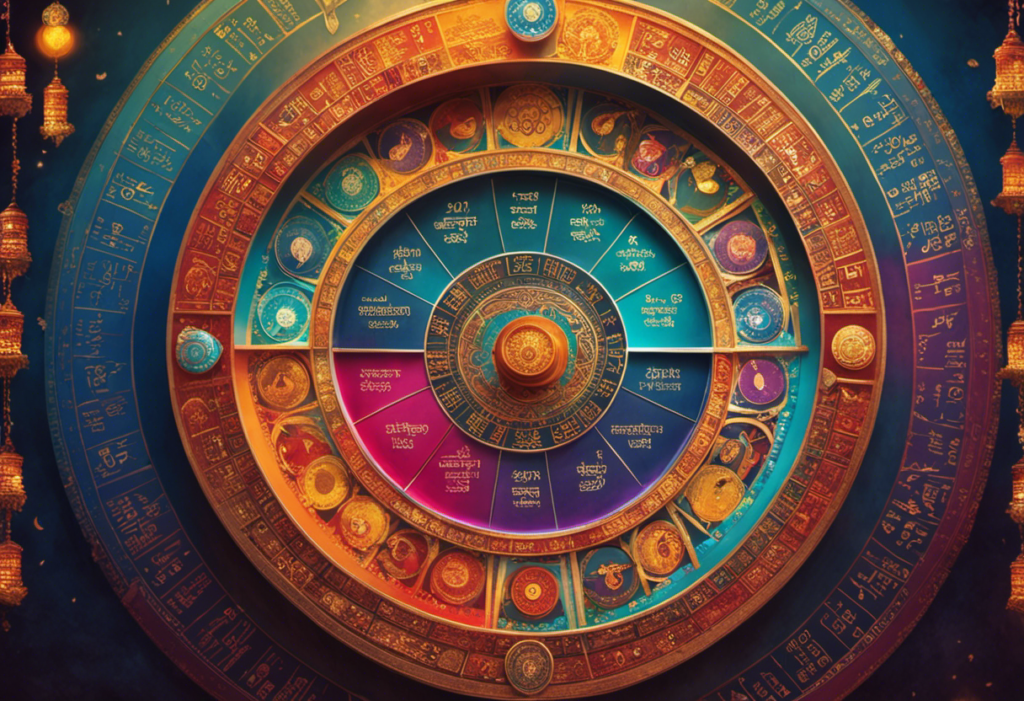Step into the fascinating world of Vikram Samvat, where time intertwines with tradition and astrology. Like a celestial ballet, this ancient Hindu calendar system dances between lunar months, tithis, and nakshatras, shaping the tapestry of festivals and celebrations throughout the year.
In this article, we delve into the structure of a Vikram Samvat year, exploring its origins, astrological significance, and intriguing differences from the Gregorian calendar.
Prepare to be captivated by the intricacies and charm of this timeless system.
Key Takeaways
- Vikram Samvat is one of the oldest and most significant Hindu calendars.
- Lunar months, called tithis, are divided into Shukla Paksha and Krishna Paksha.
- Tithis, Pakshas, and Nakshatras play a crucial role in determining lunar phases and timing of events.
- Festivals and celebrations in a Vikram Samvat year promote cultural unity and strengthen social bonds.
Origin and History of Vikram Samvat
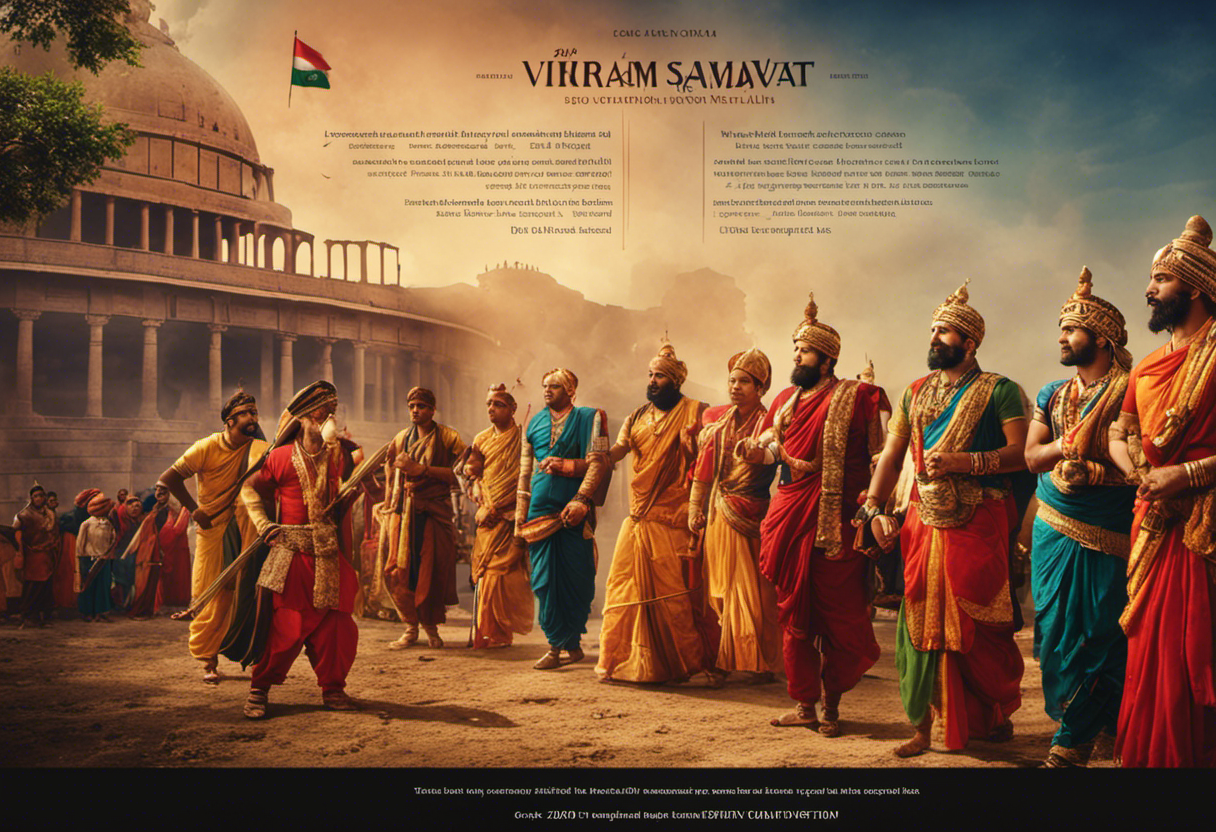

The origin and history of Vikram Samvat can be traced back to over two millennia ago, making it one of the oldest and most significant Hindu calendars in existence. Vikram Samvat follows a lunar calendar system, which is based on the cycles of the moon. The lunar months, known as tithis, are a key component of this calendar. Each month is divided into two pakshas, or lunar phases, known as Shukla Paksha and Krishna Paksha.
Vikram Samvat also incorporates nakshatras, which are specific lunar phases that align with certain constellations. These nakshatras hold astrological significance and are used to determine auspicious dates for various festivals and celebrations.
The history of Vikram Samvat is closely tied to the legendary king Vikramaditya, who is believed to have established this calendar system. It was later adopted by Emperor Ashoka and has been in use ever since.
One notable difference between Vikram Samvat and the Gregorian calendar is the starting point. While the Gregorian calendar starts from the birth of Jesus Christ, Vikram Samvat begins from the coronation of King Vikramaditya. This historical event marks the beginning of the Vikram Samvat era.
Despite this difference, both calendars serve as important tools for tracking time and observing religious and cultural events.
Lunar Months in a Vikram Samvat Year


Why are lunar months significant in a Vikram Samvat year?
Lunar months play a crucial role in the structure of a Vikram Samvat year due to their connection with the lunar phases and their astrological significance. The Vikram Samvat calendar is a lunisolar calendar, which means that it follows the cycles of both the sun and the moon. Each lunar month, also known as a tithi, begins with the new moon and ends with the next new moon. This lunar cycle is divided into thirty tithis, with each tithi lasting approximately one day.
The lunar months in a Vikram Samvat year are not only used for tracking time but also hold astrological significance. Different tithis are believed to be auspicious or inauspicious for various activities such as starting new ventures, marriages, or religious ceremonies. Astrologers and individuals consult the Vikram Samvat calendar to determine the most favorable tithi for undertaking important tasks.
Furthermore, the lunar months in a Vikram Samvat year are used in conjunction with the solar months to calculate festivals and religious observances. The alignment of the lunar and solar months ensures that festivals and important events are celebrated at the appropriate time according to both the lunar and solar calendars.
Significance of Tithis and Pakshas
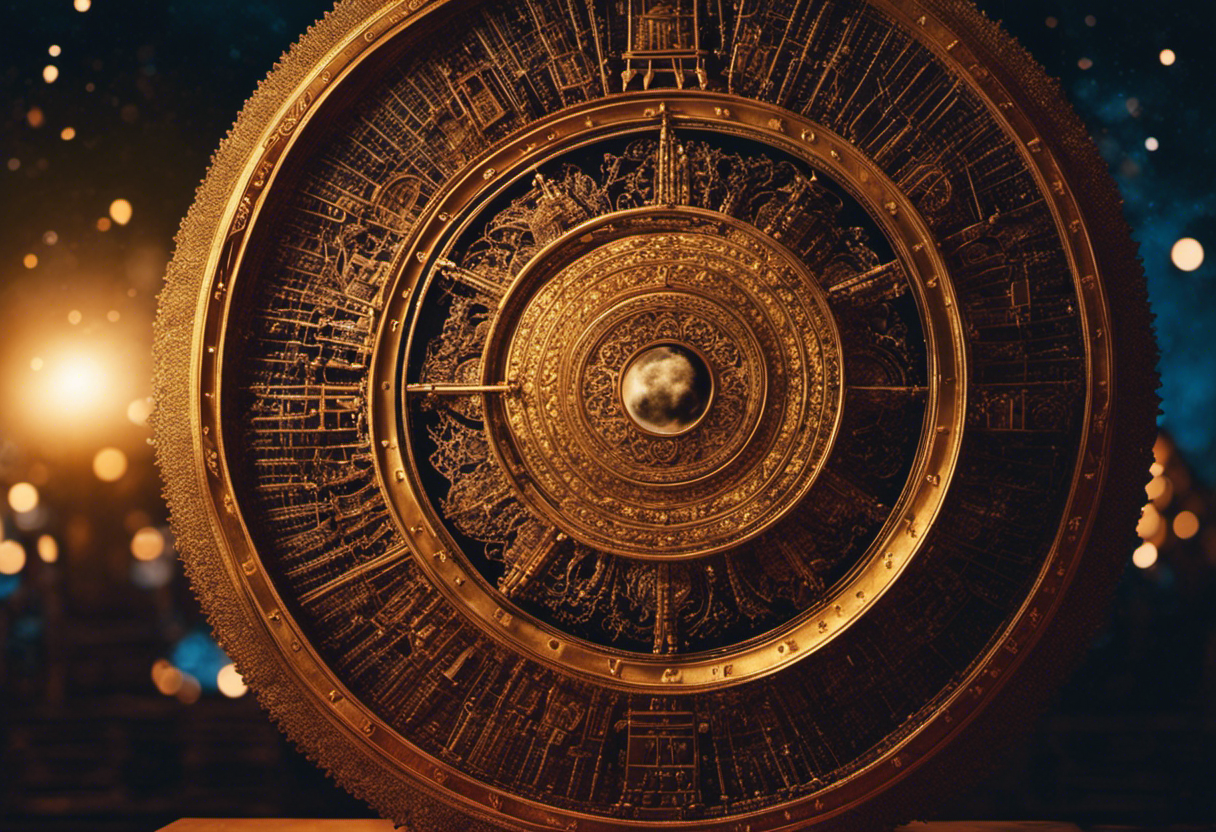

The significance of Tithis and Pakshas in the Vikram Samvat calendar lies in their role in determining the lunar phases and the timing of various religious and cultural events.
Tithis are the lunar days, which are calculated based on the positions of the Sun and the Moon. They play a crucial role in determining auspicious and inauspicious times for various activities. Tithis are used to decide important events such as weddings, festivals, and religious ceremonies. Each Tithi has its own significance and is associated with certain rituals and practices.
Pakshas, on the other hand, refer to the two halves of a lunar month – the waxing and waning phases of the Moon. The waxing phase, known as Shukla Paksha, starts from the New Moon day and ends on the Full Moon day. The waning phase, known as Krishna Paksha, begins from the Full Moon day and ends on the New Moon day. Pakshas are important in understanding the overall lunar cycle and its impact on different aspects of life.
Lunar Calendar Basics
Tithis and pakshas play a crucial role in the lunar calendar system, determining the timing and phases of various religious and cultural events.
The lunar calendar is based on the cycles of the moon, with each month consisting of two pakshas, or lunar fortnights. Each paksha is further divided into 15 tithis, which represent the phases of the moon.
The tithis are vital for determining auspicious timings for ceremonies, festivals, and other important occasions. Additionally, tithis also hold significance in lunar astrology, where they are used to analyze the influence of the moon on an individual’s horoscope.
Understanding the basic concepts of tithis and pakshas is essential for following and celebrating the lunar calendar and its traditions.
Importance of Lunar Phases
Understanding the impact of lunar phases, specifically the significance of tithis and pakshas, is essential for comprehending the intricate workings of the Vikram Samvat year. The Vikram Samvat calendar is based on the phases of the moon, and these lunar phases, known as tithis, play a crucial role in determining auspicious dates for various events and festivals.
Tithis are the divisions of the lunar month, with each tithi lasting approximately 12 degrees of the moon’s movement. The pakshas, on the other hand, refer to the two halves of the lunar month, namely the waxing and waning phases of the moon.
These lunar phases and moon cycles are significant in the Vikram Samvat calendar as they help in determining the timing of important religious and cultural ceremonies, ensuring that they align with the cosmic energies and auspicious moments.
The Role of Nakshatras in Vikram Samvat
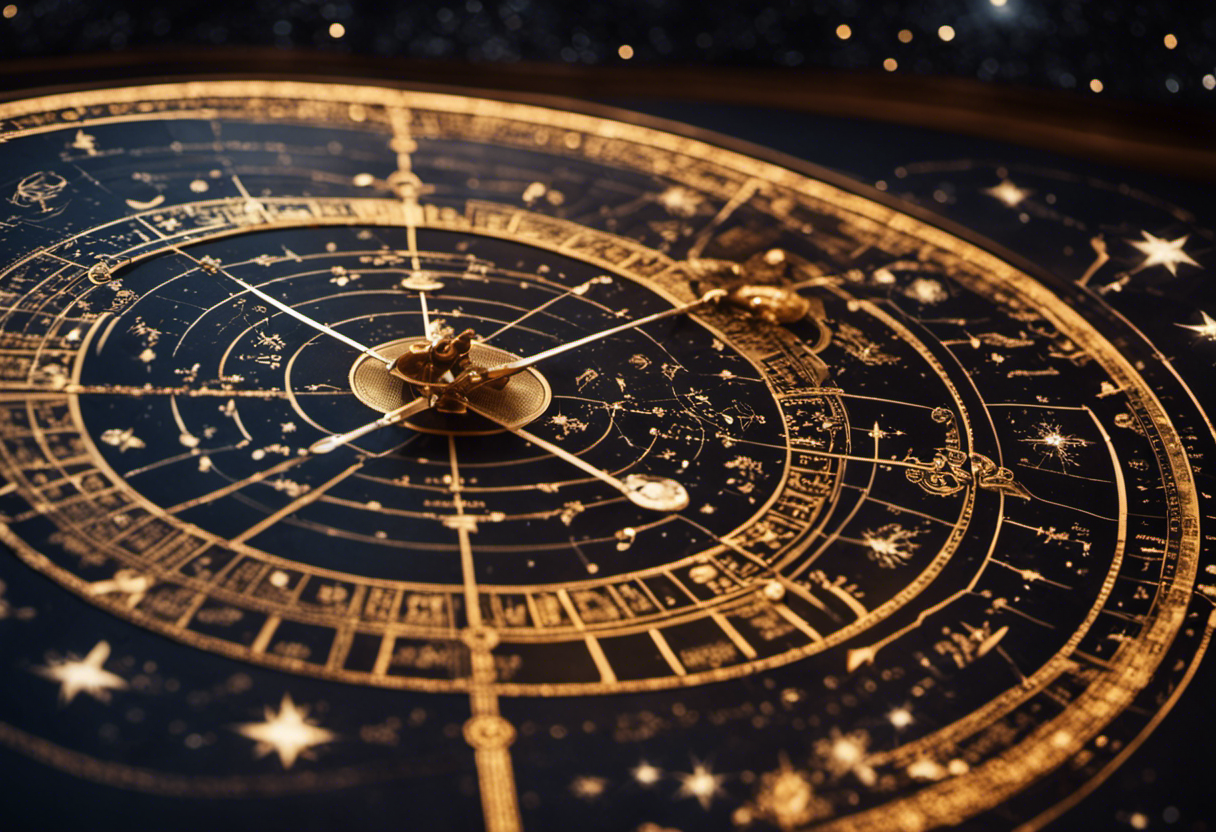

The nakshatras play a crucial role in the Vikram Samvat calendar system, which is based on lunar months.
Each month is divided into different nakshatras, or lunar mansions, which determine the energy and characteristics of that particular period.
These nakshatras influence various aspects of life, including agriculture, astrology, and religious ceremonies, and are considered essential for determining auspicious dates and times for important events.
Understanding the role of nakshatras is key to comprehending the structure and significance of Vikram Samvat.
Nakshatras and Lunar Calendar
The significance of Nakshatras in the Vikram Samvat calendar can be understood through their pivotal role in determining lunar dates and events. In the lunar calendar system, the positions of the moon in relation to the Nakshatras are used to determine the dates of important festivals and events.
The Nakshatras, which are 27 lunar mansions or star clusters, play a crucial role in calculating the lunar phases and predicting the astrological influence on various aspects of life. Each Nakshatra represents a specific energy or deity, and their influence is believed to impact different areas of life such as health, wealth, and relationships.
Influence of Nakshatras
An important aspect to consider in the Vikram Samvat calendar is the influence of Nakshatras, as they play a significant role in determining auspicious timings and events throughout the year.
Nakshatras, or lunar mansions, are the 27 divisions of the sky that the Moon passes through during its monthly cycle. These Nakshatras have deep astrological connections and are believed to have a profound impact on various aspects of human life.
Here are two key points to understand about the influence of Nakshatras in Vikram Samvat:
-
Nakshatras determine the starting and ending times of various festivals and celebrations in the Vikram Samvat calendar.
-
Each Nakshatra is associated with certain characteristics and qualities, which are believed to influence different aspects of human life, such as health, career, relationships, and spirituality.
Understanding the influence of Nakshatras is crucial in following the Vikram Samvat calendar and harnessing the positive energies associated with each Nakshatra for a prosperous and harmonious life.
Festivals and Celebrations in a Vikram Samvat Year


A variety of festivals and celebrations mark the passage of time in a Vikram Samvat year. These festivals are deeply rooted in the traditions and customs of the Indian subcontinent and hold great significance for the people who celebrate them.
One of the most prominent festivals in a Vikram Samvat year is Diwali, also known as the Festival of Lights. It is celebrated with great enthusiasm and is marked by the lighting of lamps, fireworks, and the exchange of sweets and gifts. Another important festival is Holi, the Festival of Colors, which is celebrated with vibrant colors and water play. Other festivals observed in a Vikram Samvat year include Navratri, Raksha Bandhan, Janmashtami, and Ganesh Chaturthi, among many others.
These festivals not only serve as occasions for celebration but also play a significant role in strengthening social bonds and promoting cultural unity. They bring communities together and provide an opportunity for people to reconnect with their roots and heritage. The traditions and rituals associated with these festivals are passed down from generation to generation, ensuring their preservation and continuation.
Astrological Significance of Vikram Samvat
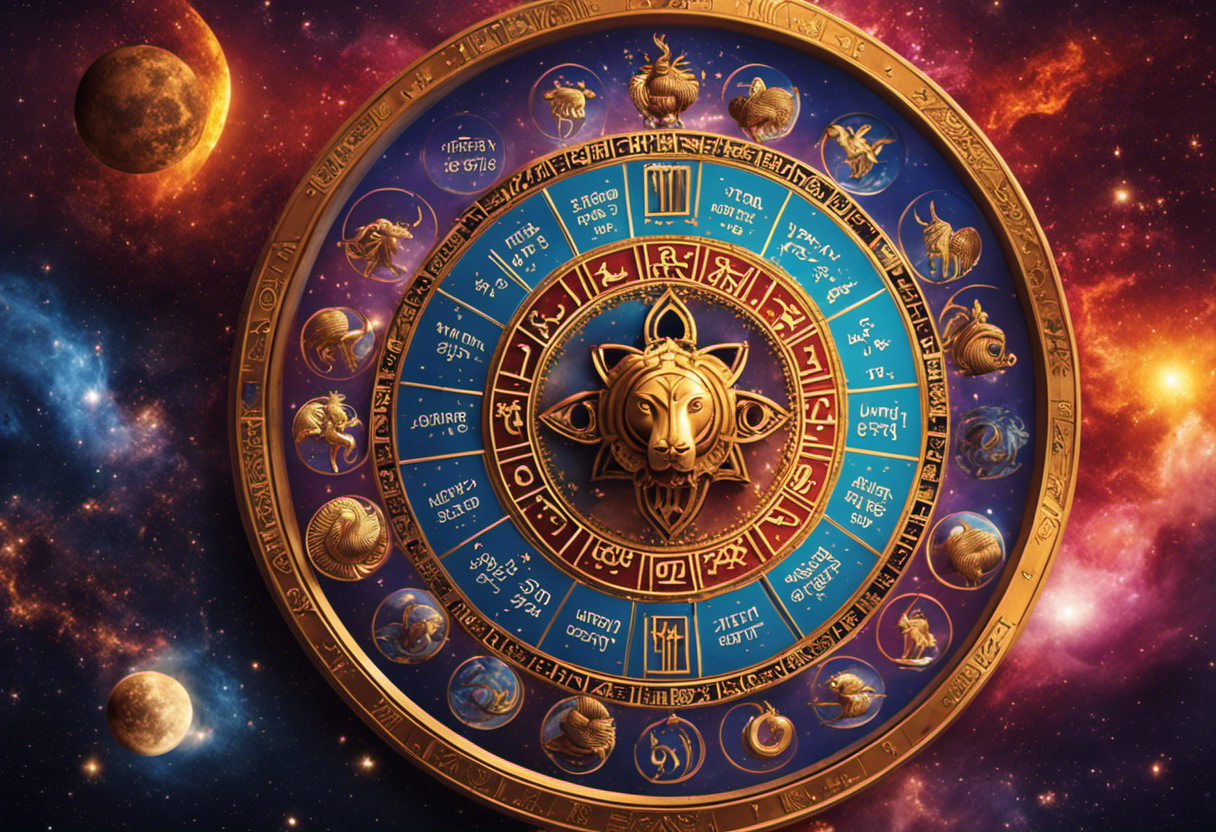

Astrologically, the Vikram Samvat year holds immense significance as it is believed to influence various aspects of individuals’ lives. The Vikram Samvat calendar is deeply rooted in Hindu astrology, and its astrological predictions are based on the movement of planets and celestial bodies.
Here are some key points to understand the astrological significance of Vikram Samvat:
-
Influence on personal life: The Vikram Samvat year is believed to impact an individual’s personal life, including their health, relationships, and overall well-being. Astrologers interpret the planetary movements during a Vikram Samvat year to make predictions about an individual’s future.
-
Effect on auspicious occasions: Vikram Samvat is considered an auspicious time for important events like marriages, housewarming ceremonies, and business ventures. It is believed that initiating such activities during this period can bring prosperity and success.
-
Timing of festivals and celebrations: The Vikram Samvat calendar plays a crucial role in determining the dates of various Hindu festivals and celebrations. The astrological calculations ensure that these events align with the planetary positions, enhancing their spiritual significance.
Understanding the astrological significance of Vikram Samvat allows individuals to align their actions with the cosmic energy during this time. It provides a framework for making important life decisions and fosters a deeper connection with the celestial forces that shape our lives.
Differences Between Vikram Samvat and Gregorian Calendar


Highlighting the disparities between the Vikram Samvat and Gregorian calendar, one notable difference is the calculation of years. The Gregorian calendar follows a solar system-based calculation, while Vikram Samvat follows a lunar system-based calculation. This fundamental difference affects the way years are determined in these calendars.
The Gregorian calendar, which is widely used across the world, follows a system based on the Earth’s revolution around the Sun. It consists of 365 days with an extra day added every four years in a leap year. This calendar was introduced by Pope Gregory XIII in 1582 and is the standard calendar for most countries today.
On the other hand, Vikram Samvat, the traditional Hindu calendar, follows a lunar system calculation. It is named after the legendary king Vikramaditya and is widely used in India and Nepal. The Vikram Samvat year is determined by the position of the Moon and consists of 354 or 355 days. The lunar year is divided into 12 months, and an extra month is added every three years to synchronize the lunar and solar years.
The disparities between these calendars have cultural significance and are rooted in traditional practices. The Vikram Samvat calendar is deeply ingrained in Hindu culture and is used to determine auspicious dates for festivals, religious ceremonies, and agricultural activities. In contrast, the Gregorian calendar is widely used for official and administrative purposes globally.
Conclusion
In conclusion, the Vikram Samvat calendar holds great historical and astrological significance in the Indian culture. Its lunar months, tithis, pakshas, and nakshatras play a crucial role in determining auspicious timings for festivals and celebrations.
While it differs from the Gregorian calendar in its structure, both calendars serve their respective purposes. Ultimately, the Vikram Samvat calendar offers a unique perspective on timekeeping and showcases the rich cultural heritage of India.
As the saying goes, ‘Every cloud has a silver lining,’ and the Vikram Samvat calendar is a shining example of that.

